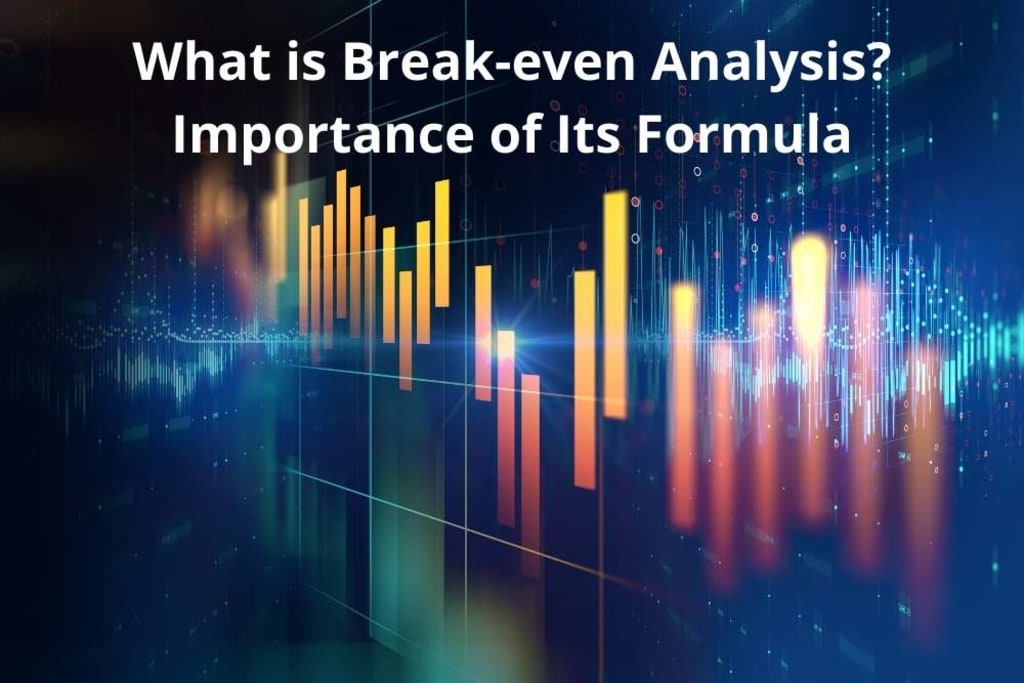What is Break-even Analysis? Importance of Its Formula
Your break-even analysis is a data-driven way to arrive at decisions regarding and sales goals. BEP guides you towards investing profits back into the business.

Break-even analysis is a way of reckoning when a business will become profitable. It decides the number of times sales a company has to make in order for t to cover operating costs. Ar BEP, costs equal profits.
The analysis is important, given that it explains how many products or services a business has to sell, or how much revenue has to pour in, for all costs -fixed/variable - to be covered. If a business oversteps the BEP, that signals its profitability. If it plunges below, the implication is that it suffers losses. The analysis permits businesses to set prices and sales targets. BEP also helps assess risk management.
An instance: break-even analysis
Suppose Kim’s Candies, a small business, is undertaking a break-even analysis. The total monthly fixed costs -insurance, rent employees - reckon up to GBP 6000. The contribution margin - revenue per unit minus variable cost per unit - for each candy bag it sells is GBP 5.
To arrive at the monthly break-even point, the business divides its total fixed costs by the unit contribution cost. To break even, Kim’s Candies must sell 1200 candy bags per month - GBP 6000/GBP 5 = 1200 units.
For a business to stay solvent and remain profitable, it has to take its variable and fixed costs into account to decide how much revenue it needs to break even.
Defining break-even analysis
A break-even analysis is the sort of financial analysis that companies employ to arrive at the volume of sales needed to break even, or cover expenses.
If sales plunge below the BEP or break-even point, the company concedes a loss. If sales are greater than the BEP, the company declares profit.
Break-even analysis is integral to any business plan. Close to all businesses have upfront expenses. Companies must know if a product stands a good chance of making a profit despite them. Otherwise, a reevaluation of the business plan is called for.
Companies also undertake to break even analysis to set the right prices for products or decide how high their expenses can be while still being profitable.
Suppose a company called Norbert’s Noodles needs to sell 2000 boxes of noodles to break even. In case the company is merely barely breaking even as is, it could use its existing sales data to decide if renting a bigger, more flashy storefront is sensible. Unless the expansion implies obvious profitability, the break-even analysis might point to significant risks.
Investors and traders may use break-even analysis to decide when they will break even on their investments. Rather than factoring in costs like employee salaries and rent, investors look at fees related to investing.
For instance, in case a stock trader knows GBP 20 in fees for trade execution, he can use that info to evaluate if the trade makes sense.
In case the trader expects to make greater than GBP 20 off the transaction, the trade may be sensible. In case he or she expects to make less than GBP 20, the trade will be unprofitable.
Regardless of what break-even analysis is used for, the BEP is the point where a business or investment is neither gain nor loss.
How does a break-even analysis work?
To make sense of how a break-even analysis works, in understands a bit of terminology
Fixed costs
Fixed costs are businesses that do not directly change on the basis of production volume. These are things such as rent payments, lease payments, property taxes, interest, utilities, and employee salaries ;
Variable costs
These are expenses that are directly connected to production volume. Included are direct labour costs, material costs, and sales commissions;
Contribution margin
This is a product’s revenue minus its variable costs. Unit contribution margin is the degree of profit each individual sale makes in the absence of fixed costs. The calculation involves taking a product’s sales price - its revenue - and subtracting all variable costs - production costs. For instance, in case a product costs GBP 10 to manufacture and sells for GBP 20, the unit contribution margin is GBP 10.
You can easily monitor your position with the help of technical analysis using various tools provided by PrimeFin. The broker allows to access chart patterns where you can read double top and bottom to find the right entry and exit points.
Conclusion
Break-even analysis helps make strategic business decisions. There are a lot of market factors impacting a situation. The analysis does offer a good starting point. break-even analysis helps you to proceed towards making a profit. Business owners regularly perform the analysis to show business growth, plan future expansion funding.
About the Creator
george thomas
https://forexrating.com/





Comments
There are no comments for this story
Be the first to respond and start the conversation.